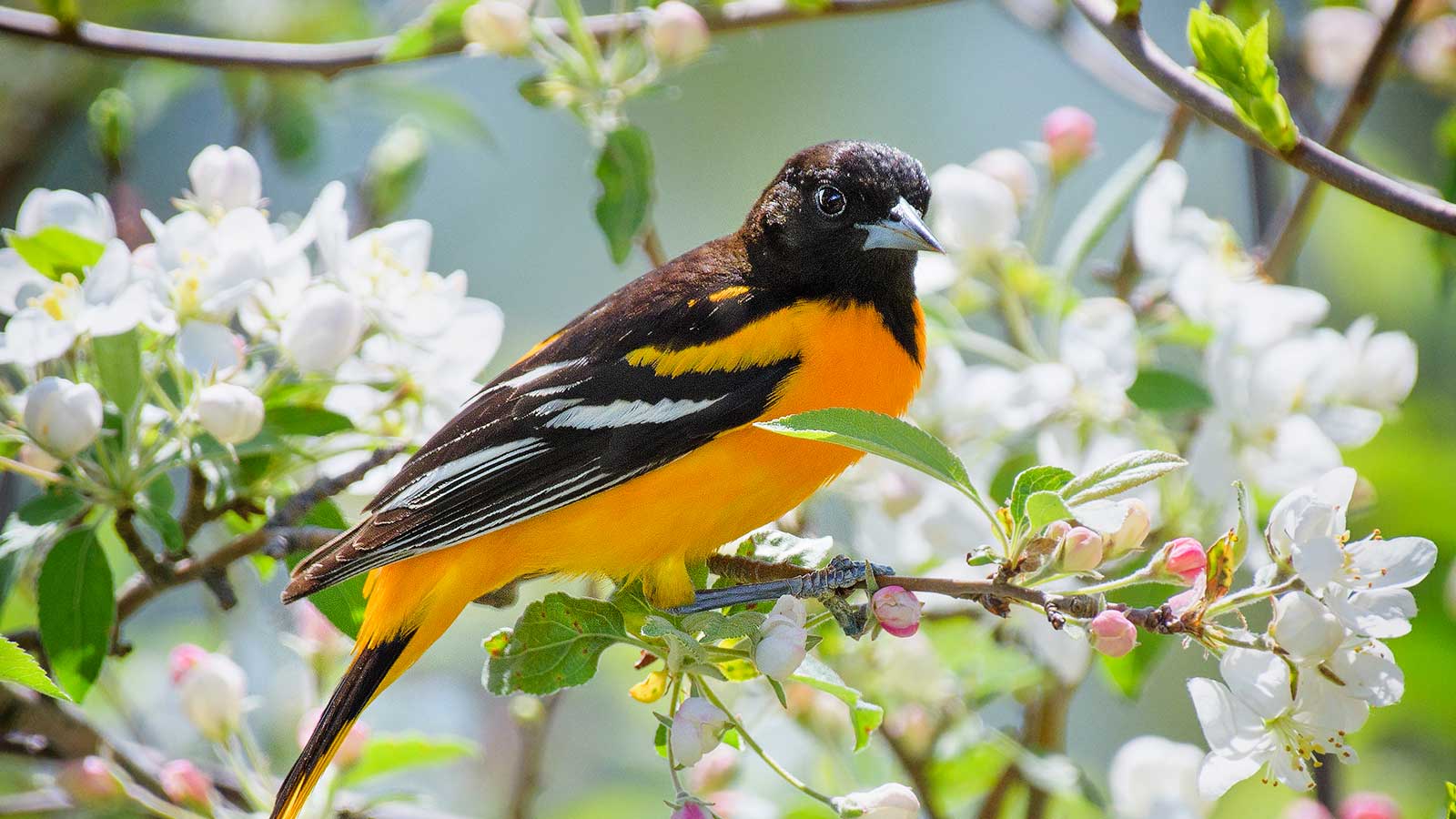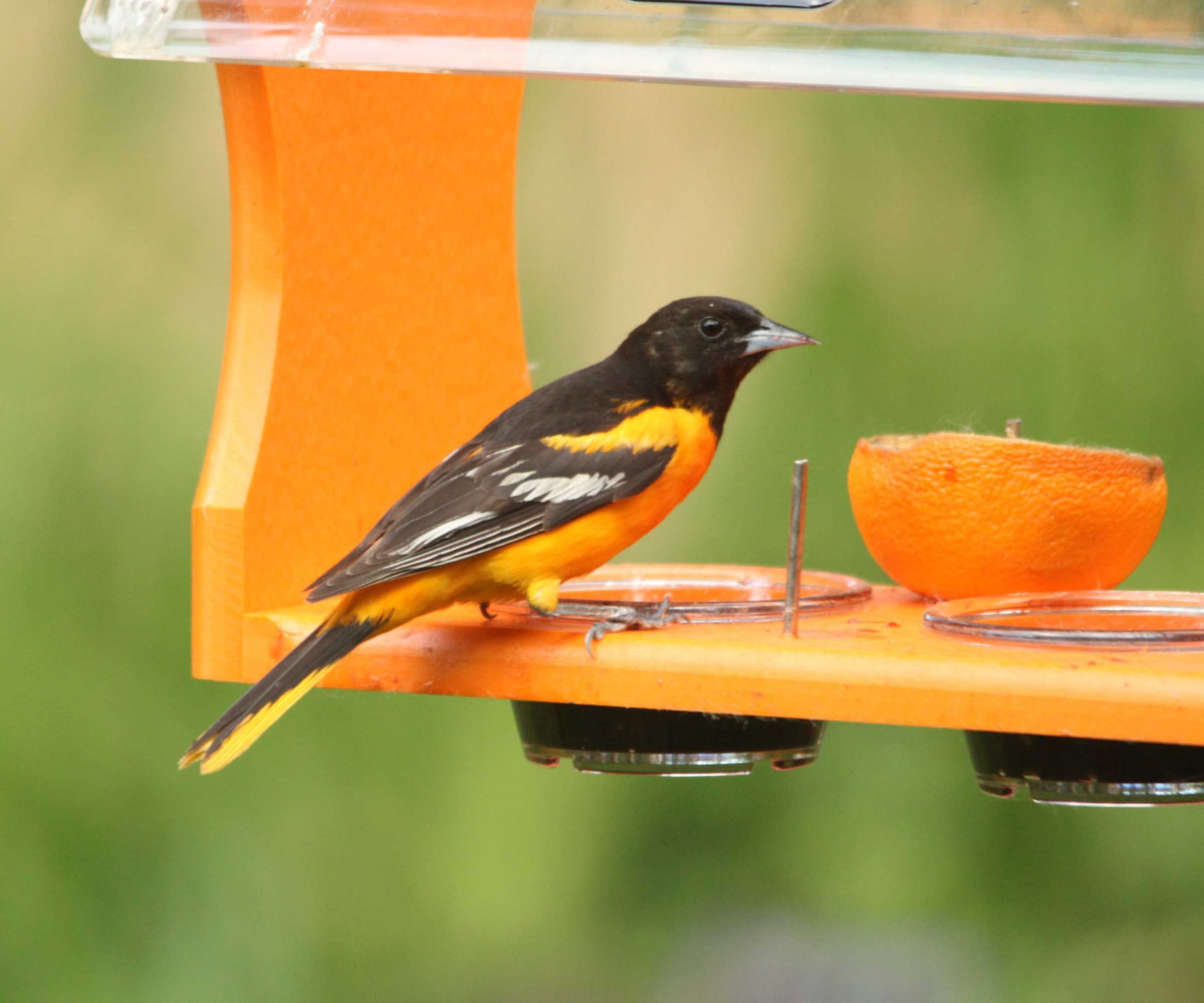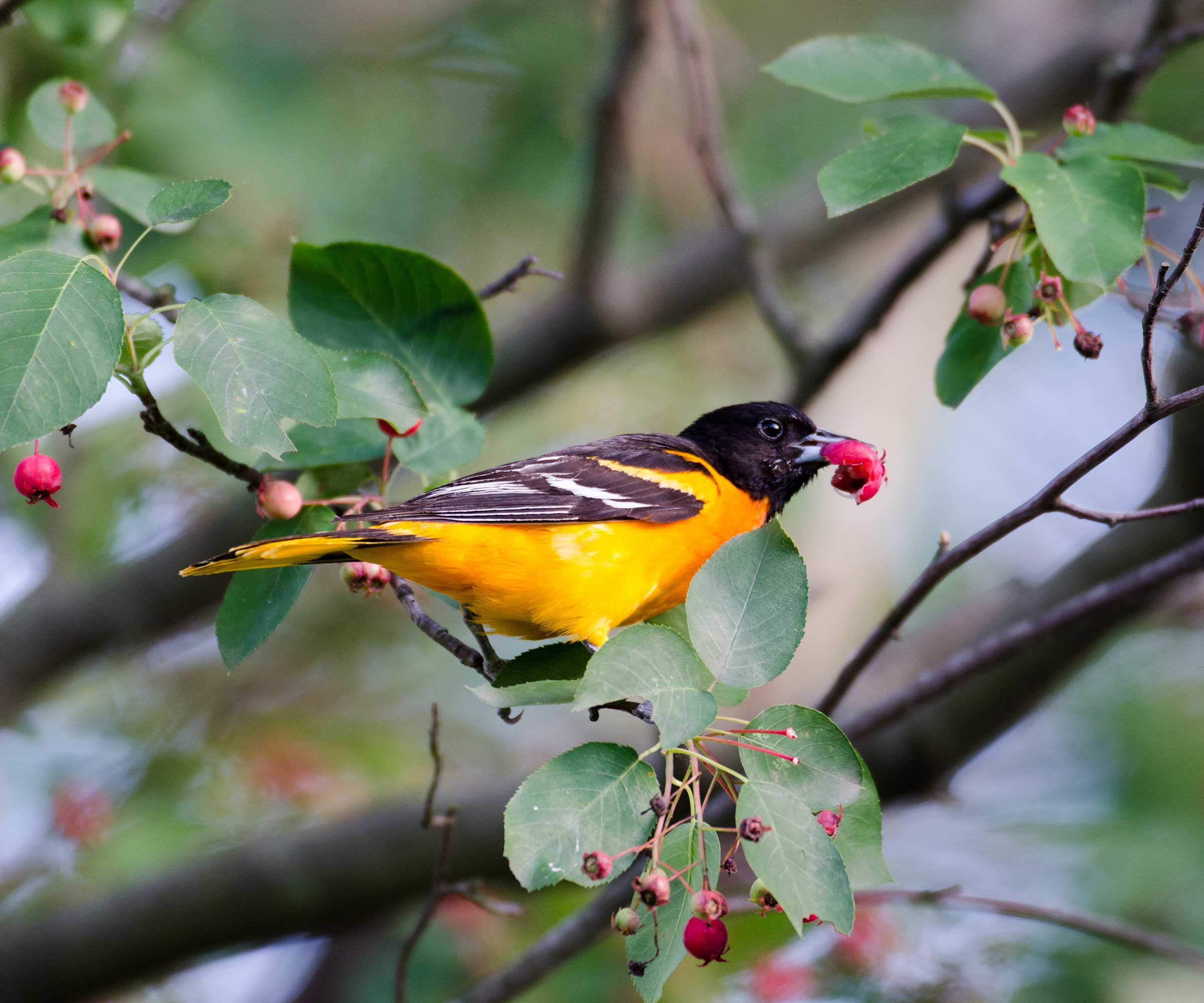
Visiting birds bring an extra dose of color, life, and sound to our backyards. Watching them flit to and fro can encourage us to take a pause from our busy, often screen-orientated routines and connect with nature. And, of course, making our spaces more bird-friendly by providing sources of food can benefit them, too.
There are many winged wonders you can welcome into your plot, including hummingbirds and woodpeckers. Orioles are other colorful birds not to overlook – especially as, according to ornithology research specialist at FeatherSnap Maria Kincaid, seven of the eight regularly occurring species in the US are decreasing in population, primarily due to habitat loss.
Putting out food is one of the best ways to attract birds, but catering to their preferences is key. Maria notes that not all species of orioles will visit seed feeders, but they're known for drinking nectar and eating fruits – and they eat insects, too. Below, you'll find her recommendations to try.
Put out nectar feeders

'Orioles will often feed on the nectar from different flowers, much in the same way that hummingbirds will,' says Maria. Likewise, hummingbird feeders can attract them – or, even better, you can use nectar feeders that are specifically designed for orioles.
These tend to have somewhere for the birds to perch and larger feeding ports, and can also include places to put other treats, such as fruit.
'You’ll use the same type of nectar as you would for hummingbirds, which is simple to make at home: four parts of water to one part sugar, simmered until the sugar is dissolved,' says Maria. 'Make sure to cool your nectar to room temperature before adding it to your feeder,' she adds.
This feeder includes built-in bee guards and an ant moat to help keep insects away. The design also enables you to offer oranges and jelly at the same time.
Try offering other sweet treats

Maria recommends putting out an orange feeder in the beginning of orioles' spring migration. 'During the migration, orioles are attracted to fruits to support their high energy levels,' she says.
'Split an orange in half, and place it on a feeder with a fruit spike, on a platform feeder, or even on a tree branch,' Maria instructs. 'Make sure to replace the fruit every one to two days to prevent the fruit from drying out or growing mold.'
Maria also says that orioles love grape jelly. 'You can purchase a jelly feeder, or use a small jar or other shallow container on a platform feeder.'
However, she recommends only using a small amount – this will help prevent orioles and other birds from getting their feathers messy. Again, be sure to replace it regularly.
Offer jelly and orange halves to orioles with this fun, powder-coated steel design, complete with a hanging chain.
Other ways to make your yard more enticing

'Orioles not only enjoy eating fruits and nectar, but will eat caterpillars, spiders, and other invertebrates that make their home in your yard,' says Maria.
'Either limit or do not use insecticides in your yard – when you’ve got no insects in your yard, you also do not have the birds that depend on them as a food source. Orioles particularly love caterpillars and spiders.'
She also recommends planting fruit-bearing trees and shrubs, as well as flowers that produce nectar. To feed Baltimore orioles and Orchard orioles, bird expert Maren Gimpel suggests planting mulberries or chokecherry (Prunus virginiana).
FAQs
When should you put food out for orioles?
'Make sure to place any oriole feeders early on in the spring migration,' says Maria. 'Orioles like to know that the food is there when they arrive, or else they’ll move on to other options.'
Similarly, be sure to put hummingbird feeders out at the right time, too.
Where are orioles found in the wild?
According to Maria, most orioles prefer open deciduous woodlands, but Southwestern species like the Altamira oriole, Audubon’s oriole, and Scott’s oriole live in arid lands or dry brush.
Maren says that in most of the eastern part of the continent, there are only two species of orioles: the Baltimore and the Orchard. 'These orioles can be found among second-growth trees, edges of mature forests, and other deciduous woodlands,' she says. 'Even in places where they are common, many people say they've never seen an oriole. The combination of their preferring to stay high in trees and not coming to seed feeders means for some, a bright orange streak darting between trees is the best look they'll get.
'Males sing their melodious whistling songs from high overhead, so learning what they sound like can help you spot them,' Maren adds.
There are lots of ways to make your backyard more wildlife-friendly and, as a result, enjoy the benefits that birds can bring. Take the seasons into consideration – for instance, there are ways you can help garden birds in summer and in winter.
Don't forget about beneficial insects, too, such as butterflies and bees. Our guide on plants for pollinators will help you welcome them to your space.







